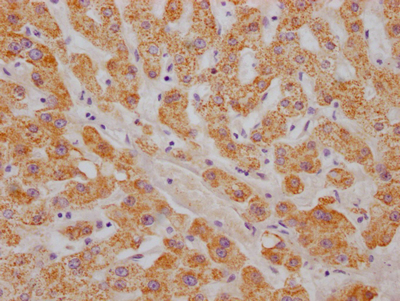To create the ABAT recombinant monoclonal antibody, a series of complex and sequential procedures are necessary. Initially, the ABAT monoclonal antibody is harvested, and its gene sequence is determined. Subsequently, a vector containing the ABAT monoclonal antibody gene is designed and transfected into a host cell line for culture. The immunogen for the ABAT monoclonal antibody is then produced using a synthetic peptide derived from human ABAT. The ABAT recombinant monoclonal antibody is later purified using affinity chromatography to ensure high purity. Finally, the antibody's specificity is confirmed by testing it in ELISA and IHC assays, which assess its ability to accurately recognize ABAT. It only detects human ABAT protein.
The ABAT protein is an enzyme that plays a critical role in the catabolism of the neurotransmitter gamma-aminobutyric acid (GABA) and the regulation of its levels in the brain and other tissues. ABAT activity is regulated by the availability of its co-substrate, pyridoxal 5'-phosphate (PLP), which is a derivative of vitamin B6. Changes in ABAT activity can affect the levels of GABA in the brain, which can have important implications for the regulation of neuronal excitability and the pathogenesis of neurological disorders, including epilepsy and anxiety disorders. ABAT has also been implicated in other biological processes, including the metabolism of other amino acids, such as alanine and beta-alanine, and the regulation of glucose metabolism.




